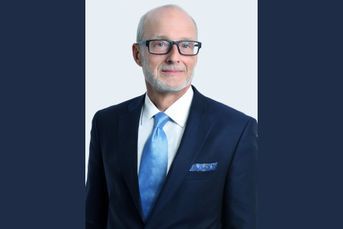Education still seen as important even as 529 awareness drops

The portion of respondents who correctly identified a 529 plan as an education savings tool came in at its lowest level since 2020, an Edward Jones survey shows.
The majority of Americans (55%) still view higher education as a priority. In fact, a recent survey by Edward Jones showed respondents’ intentions to contribute to education expenses has increased over the past two years.
That said, the same survey showed that the portion of respondents who correctly identified a 529 plan as an education savings tool came in at just 34%, its lowest level since 2020.
“While it is great that Americans are prioritizing saving for education expenses, it’s unfortunate that the awareness of 529 plans has declined substantially,” Steve Rueschhoff, principal in managed investments and insurance at Edward Jones, said in a statement. “With changes to federal and state laws, 529 plans can now be used for more things, benefiting more Americans and their opportunities for education and advancement.”
Elsewhere, the report found that Americans have a greater interest in enrolling in a 529 plan after learning about the wide array of benefits. For example, over one-third of investors said the ability to roll unused 529 assets to Roth IRA made them feel more inclined to enroll in a 529 plan. Other benefits that increase the inclination to use a 529 plan include the tax benefits (37%), having the flexibility to control the 529 account (35%) and using it for qualified education expenses at eligible universities (33%), according to the study.
The survey also found there may be a correlation between adults considering affordable college options and a lack of confidence in how much they’re currently saving for education costs. Slightly under half of adults (44%) say they’re not currently saving enough for future education expenses, especially in light of higher education costs and economic pressures, the study said.
“With all education expenses seemingly increasing, it is vital that families understand their options,” said Brian Hartmann, partner at Granite Bridge Wealth Management, part of Advisor Group. “The earlier in a child’s life that parents can begin to fund their college savings plans, the better, as small contributions can make big impacts when money is needed for tuition, room and board.”
Laurie Humphrey, retirement income certified professional at Granite Financial, part of Advisor Group, said the turbulent last three years have brought a number of variables to the college planning environment. In her view, the holding pattern on financial aid repayment, the modifications to the college experience resulting from the pandemic, and the pendulum swing to technical or community colleges seem to have affected people’s patterns for saving for college.
“With the market conditions in 2022 and some of the underlying uncertainty in 2023, many shifted their focus to their retirement saving vs. saving for education,” Humphrey said. “I anticipate that will change once markets stabilize and there are some concrete decisions made on student loan repayment programs. The Secure Act 2.0 introducing the opportunity to convert 529 plans to Roth IRAs down the road provides a unique opportunity to save for both college and/or retirement without having the earnings requirement for early investing.”
Struggling workers bending under current economic pressures
Learn more about reprints and licensing for this article.








